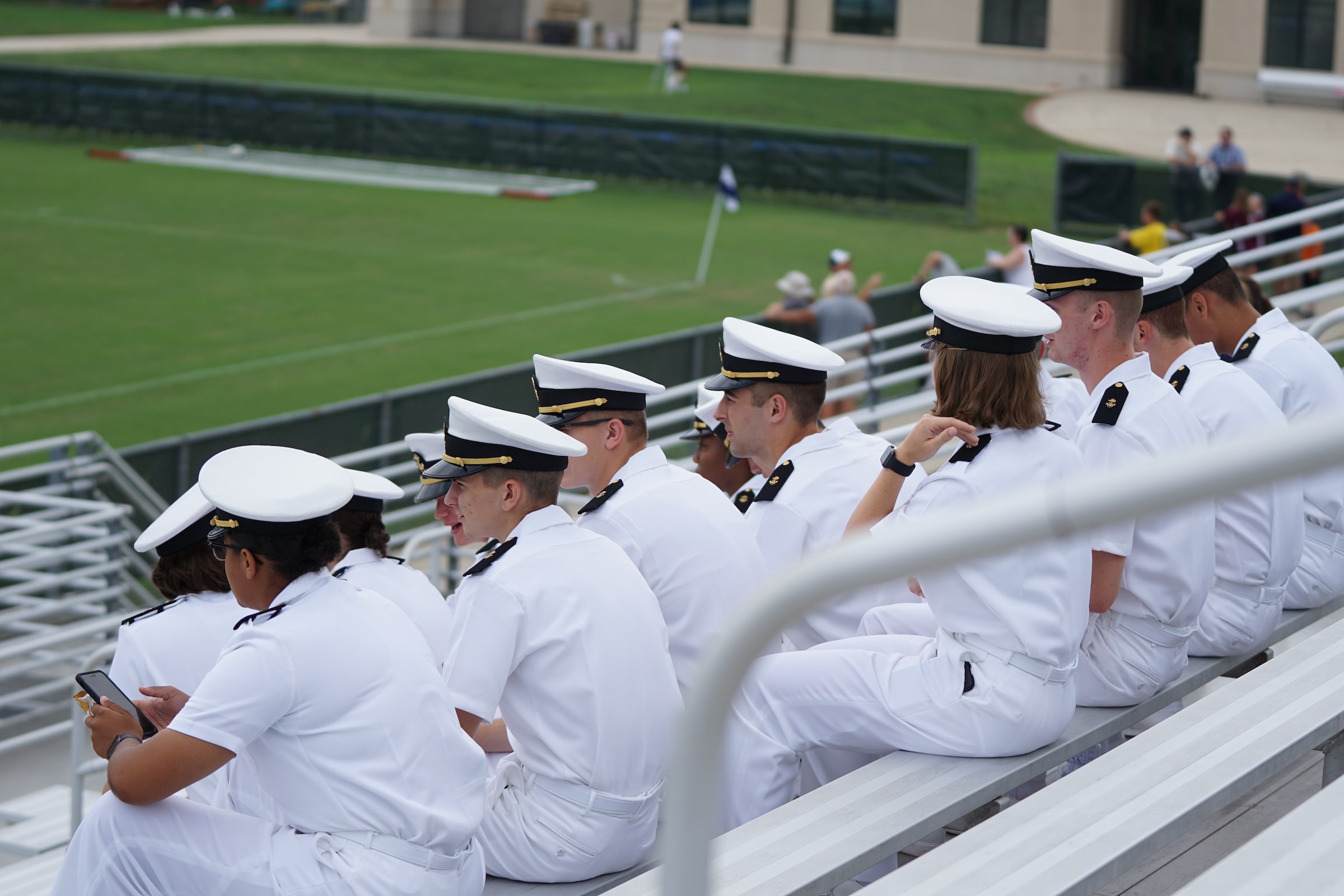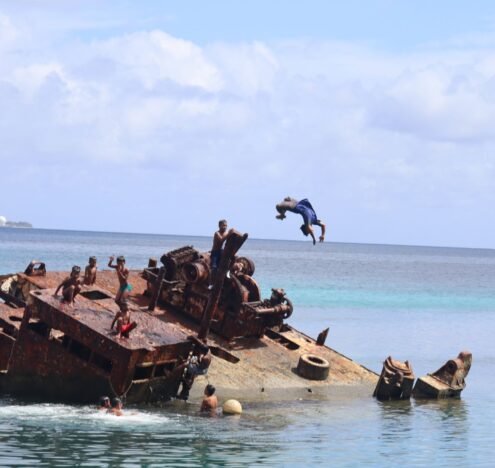It is a truly great time to be a navalist in the United States. With the United States’ strategic lens firmly pointed at China, maritime matters are now front of mind. The size and scope of the US Navy are of the utmost importance to policymakers, while the Army is forced to redefine its mission after two decades as the center of attention in Afghanistan. What’s more, the National Security Advisor during the Trump administration, Robert O’Brien, made it his personal mission to ensure that the Navy’s strategic lodestar was a fleet of 500 ships.
Far from abandoning the previous administration’s aspirations, the current Chief of Naval Operations has continued to beat the 500-ship drum. As if that were not reason enough for even the saltiest to be optimistic, Representatives Elaine Luria (D-VA) and Mike Gallagher (R-Wisc.) constitute a bipartisan bulwark against misguided policy among the sea services. Beyond the executive level, pundits and policymakers alike are spilling plenty of ink writing about the Navy and its future.
At the same time, it was a winter of discontent for many of the Navy’s sailors, and there is little evidence that it was made brighter by this summer. The first incident was over 20,000 gallons of jet fuel spewing from burst pipes at the Red Hill fuel depot on Oahu, which resulted in contaminated drinking water for servicemembers living on Joint Base Pearl Harbor-Hickam. The bungled response resulted in sick servicemembers and a meritorious award for the commander of the base. Next came reports of “hellish conditions” at Walter Reed. Only after reports surfaced did it become apparent that juniors enlisted had been complaining of the lack of hot water and other maintenance issues for months prior. Not long after those revelations did the world learn about the rash of suicides on the USS George Washington, which was in the shipyard for routine repairs. Finally, more recent reporting has uncovered systemic and persistent administrative issues in the Navy. Lack of orders and pay issues are common. Personnel, such as myself, are leaving the Navy without DD-214s, thus preventing them from accessing VA benefits as well as post-service employment. In the face of all of this, sailors are heading for the exits.
How can it be that during a strategic moment when the Navy is such a vital tool of US power, that its servicemembers are the least cared for? The answer to that question lies in much of the punditry’s spilled ink.
THE CONTRADICTION
The policy establishment as a whole has become so laser-focused on strategy that the people are an afterthought. This fact, coupled with the Pentagon and Congress’ focus on equipment leaves sailors high and dry. Take, for example, a recent article by Emma Salisbury addressing the Navy’s strategic planning — or lack thereof. Salisbury rightly highlights strategic failures and pleads for open communication between Navy leadership, Congress, and the defense industrial base. She also notes the negative pressures that political donations play in the role of the industrial base in supporting strategic priorities. There is even a brief mention of manning issues that the Navy continues to face. Innovation, however, and new autonomous systems will help ameliorate that problem.
It’s far easier to write that China has a large navy, ergo the United States should have the same. It is much more difficult to ask whether or not we can afford such a luxury when the Navy cannot currently field a fleet with high personnel readiness.
The underlying thesis of the article is not wrong, but the treatment of personnel issues is. It may be that the technology-forward prescription to manning problems is a lingering effect of the Third Offset, but such simplistic solutions are grist to the mill for a system that continues to prioritize technology and equipment over personnel considerations. Technology is important, but so are people. In 2015, the F-35 was promised to be the last manned fighter the Navy would buy except that the Next Generation Air Dominance — a joint USAF and USN program — will feature a manned fighter. Seth Cropsey and Harry Harlem put it best in their assessment of the systemic failures that led to the fire on the Bonhomme Richard: “For all the high technology of modern military forces, the United States still needs sailors, soldiers, airmen, and marines to fight its wars. No technological wizardry will remedy the personnel crisis that the Navy faces.”
Other articles on the Navy’s strategic issues ignore the people as well. For example, Chris Dougherty highlights the service’s strategic bankruptcy without a single mention of personnel. Reporting on the Biden administration’s defense budget proposal has bar graphs about helicopters, and telling statements such as “more important for Congress, a second DDG-51 destroyer is missing from the Navy’s request.” Even an article from Rep. Luria (D-VA) reads more like a misty-eyed remembrance of the heady days of the Reagan-era Navy, not a detailed assessment of how to ensure ships are properly manned.
WASHINGTON IS TO BLAME AS WELL
The Pentagon and Congress are not helping the problem either. In the Chief of Naval Operations Navigation Plan for 2022 — a guiding tome of sorts — sailors are the last consideration. And while the document promises servicemembers that there won’t be a hollow fleet, there is little mention of how Admiral Michael M. Gilday expects to properly man and equip a fleet of 500 ships while today’s units continue to have unfilled requirements. That coupled with senior leadership who seem preternaturally incapable of showing empathy toward sailors’ concerns does not fill me with confidence.
The 2022 National Defense Authorization Act is no better. There is a request for an immediate report on the material readiness of the Virginia class submarine and provisions for advanced degaussing systems on Arleigh Burke class destroyers built after the fiscal year 2025. There are also calls for reports on how the Navy will field advanced Carrier Air Wings and why said Air Wings will only have one squadron of F-35s instead of two. But no mention of the 2,000 personnel assigned to them. There’s even space for a newly created National Museum of the Surface Navy. Beyond pay raises, bereavement leave, and money for education facilities, there is no reckoning with the serious personnel issues in the Navy that have been ongoing since well before this year’s incidents.
The most obvious issue emanating from Washington, however, is that the system prioritizes acquisitions over personnel issues. The five largest defense contractors — Lockheed Martin, Boeing, Northrop Grumman, Raytheon Technologies, and General Dynamics — spent over $60 million on lobbying in 2020. That’s a lot of influence that sailors simply cannot match. The end result is large defense projects which everyone wants to be a part of. It is no accident that the F-35 program supports jobs in 45 states.
For those who write about the strategy the answer is equally simple. Strategy is fun. Pundits, scholars, and policymakers can tackle large questions which intersect with wonky concepts like shipbuilding capacity but avoid sticky concepts like mental health, spousal employment opportunities, and individual career aspirations. It’s far easier to write that China has a large navy, ergo the United States should have the same. It is much more difficult to ask whether or not we can afford such a luxury when the Navy cannot currently field a fleet with high personnel readiness. Equally as difficult is asking whether a properly trained and equipped Navy of three hundred ships is better than a fantasy Navy of five hundred ships. The Navy’s Title 10 obligations are certainly important, but how does forward presence affect the readiness of the Navy? Even the Joint Professional Military Education establishment wants everyone to become strategists, a dubious assertion akin to training every little league baseball player for the majors.
DON’T FORGET THE PEOPLE
There is nothing inherently wrong with writing about strategy. It is vitally important that the United States has a strategic plan for contending with China. Yet, a strategy is nothing without people to support it. Not only does writing about a technology-forward strategy ignore the people, it sends a loud signal that they are not important. This signal is then echoed by Navy leadership, which has a deleterious effect on issues like retention and morale.
There is some progress, particularly from congressional allies, but that is not enough. While China has some recruitment issues with questionable solutions, they are a totalitarian state capable of mobilizing its citizenry through any means available. The United States has the luxury and curse of living in a democracy with an all-volunteer military. The people must be considered.
Grant Parks is an investigative analyst intern at C4ADS and an EA-18G pilot in the naval reserve. The views expressed here are his own and do not reflect those of the US Navy.




















